The early raids
The first bombs fell on Bielefeld in May 1940. Further bombs fell on August 12th, September 3/4th and October 1st. The first major raid was June13th 1941 when the town centre and the Dürkopp works were badly damaged. This was followed by Wellington raids on the 5/6th & 8/9th July.

For the next three years Bielefeld was free of major air-raids but this was soon to change. From June 1944 onwards hardly a day or night went by without the sound of an air-raid siren and the population was in a state of constant readiness to take to the shelters.
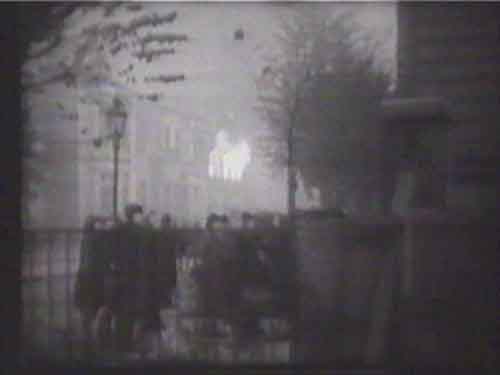
Following D-Day in June 1944 the attacks against the viaduct began in earnest and for several months B-17 and B-24s of the US Eighth Airforce tried to destroy the viaduct. Their 250kg and 500kg bombs did little except turn the surrounding landscape into a crater land.

On September 30th 1944, the centre of Bielefeld was completely destroyed by 257 B-17s dropping 596 tons of bombs. Over 700 years of history was obliterated in less than 30 minutes and over 600 inhabitants were killed. Although the viaduct was not the main target, several bombs dropped in the nearby area.
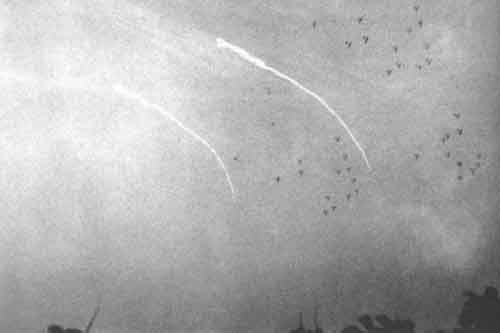
Target markers fall from American bombers.
On November 2nd 1944 172 American B-24s bombed the viaduct for nearly one hour. The viaduct was only slightly damaged but 42 inhabitants were killed in this raid. Another heavy raid with 240 B-24s on November 26th killed another 44 and damaged much property. The railway tracks were hit but were repaired within 24hrs.
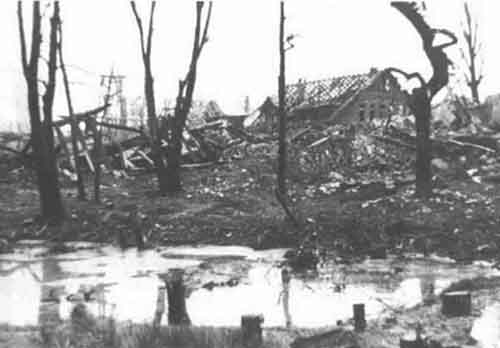
The ruins of the Halhof farm.
On November 29th 1944 the Americans attacked again with 152 B-24s and 512 tons of bombs. When the alarm came two trains were nearing the viaduct. The trains stopped and the passengers jumped off and looked for shelter in nearby buildings and old bomb craters.

The raid flattened the remaining buildings and there were many casualties with several bodies not being found until the following summer. After this raid the last families abondoned their homes and fled. In the month of November 1944 alone, the Americans had dropped over 2,500 high explosive bombs and 33,000 incendiaries (for what reason!!!) on the viaduct.

The concentrated bombing left the countryside unrecognisably changed.
Further American raids took place on the 6th December 1944, 9th February 1945 and 7th March 1945. The raids managed to damage two spans and one pier of the viaduct but this was quickly repaired by placing steel girders across the damaged section.
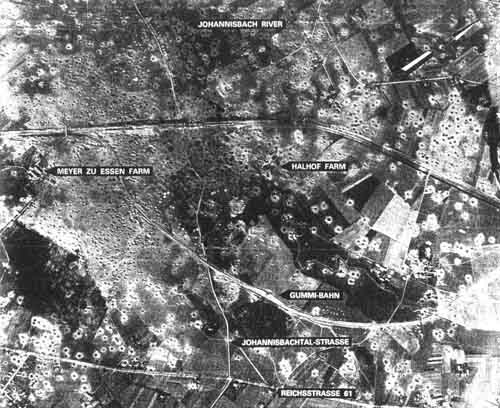
The first British raid by 35 aircraft from 9 and 617 Squadron on the Bielefeld and Altenbecken viaducts was planned for February 6th 1945 but was recalled due to bad weather over the target. A subsequent raid on the same targets for February 14th was also abandoned.

The Altenbecken Viaduct.
On February 22nd the weather was better and 617 Squadron dropped 18 Tallboys on the viaduct. Although the crews thought they had achieved one hit this was not the case. The track away from the viaduct had been badly damaged but the Organisation Todt quickly repaired the damage.
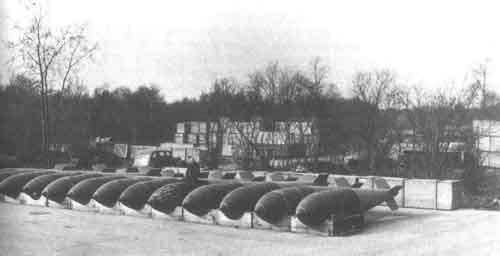
A further raid was attempted on March 9th but again this was aborted due to low cloud over the target. Over three million kilograms of high explosive had been dropped on the structure but, although potmarked and chipped, it still stood firm.
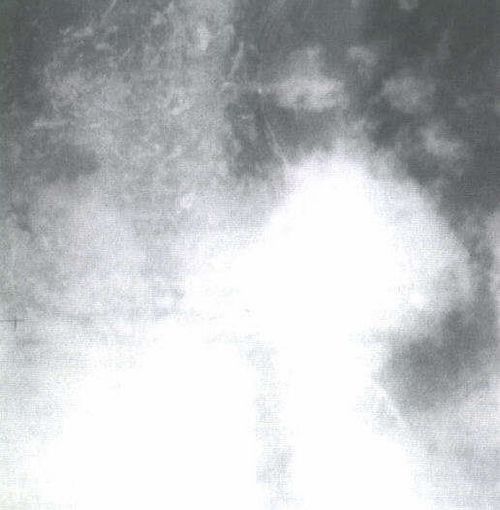
Extensive cloud cover resulted in the precious weapons being returned to base.